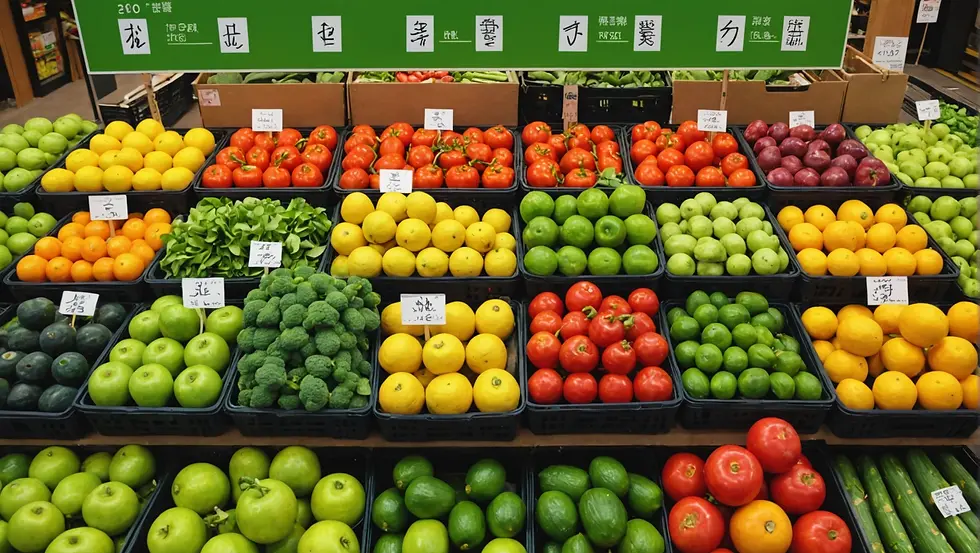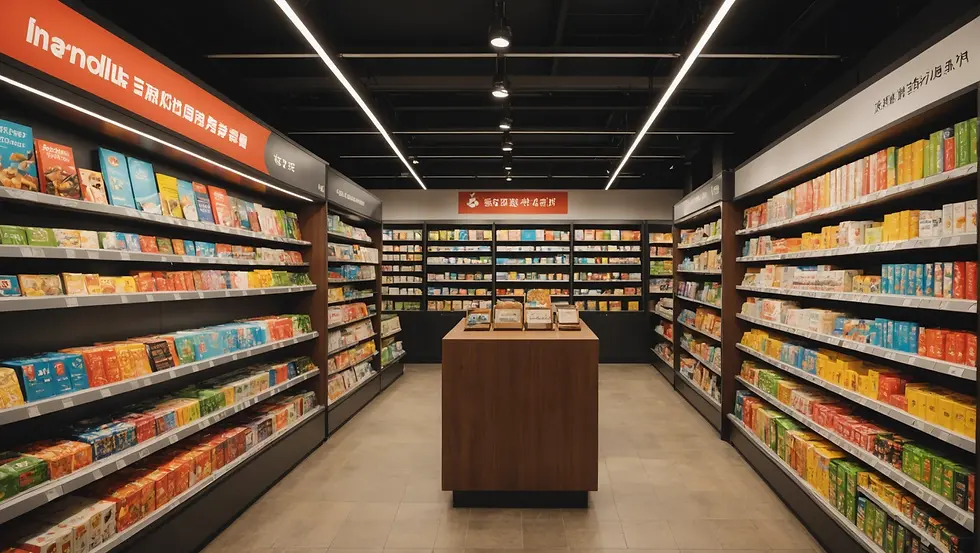Merchandise Planning: Boosting Your Grocery Store's Sales and Efficiency
- Sam Fakhouri
- Nov 12, 2024
- 4 min read
Updated: Mar 17
Merchandise planning is the strategic process of organizing and displaying products in a way that maximizes sales and enhances customer satisfaction. For grocery store owners and retail decision-makers, effective merchandise planning is key to staying competitive and increasing profitability. This article will explore key strategies for merchandise planning, including product categorization, optimizing shelf layouts, adjusting planograms, and leveraging promotional space to boost your grocery store’s sales.
Table of Contents
Why Merchandise Planning Matters for Grocery Stores
Merchandise planning is more than just filling shelves with products; it’s about using data and insights to make informed decisions about what products to display and where to place them. Effective merchandise planning helps:
Maximize sales: By ensuring high-demand products are easy to find.
Optimize profit margins: By prioritizing high-margin items.
Enhance the shopping experience: By creating a layout that encourages impulse purchases and easy navigation.
When done right, it ensures that you’re meeting your customers’ needs while driving revenue and reducing waste.

Key Strategies for Effective Merchandise Planning
1. Categorizing Products Based on Demand and Profitability
In merchandise planning, categorizing products based on demand and profitability is crucial for success. By analyzing sales data, you can identify which products are most popular and which have the highest profit margins. This allows you to prioritize these products, making them more visible and accessible to your customers.
For example, placing high-demand items like fresh produce or top-selling snacks at the front of the store ensures they catch customers' attention immediately, while high-margin products like organic goods can be placed in prime locations to encourage purchases.
2. Optimizing Shelf Layout for Impulse Purchases
Impulse purchases are a significant driver of revenue in any grocery store. By strategically placing products near checkout counters or in high-traffic areas, you can encourage customers to make last-minute buys. Merchandise planning isn’t just about filling shelves; it’s about creating opportunities for customers to make these spontaneous decisions.
To boost impulse buys, focus on placing small, easy-to-grab items like snacks, candy, or beverages near checkout areas. This simple tactic can drive a significant increase in sales, particularly for products with higher margins.

3. Adjusting Planograms Based on Seasonality and Sales Data
Planograms, or shelf layouts, should not be static. As a part of merchandise planning, it's important to adjust your planograms regularly based on seasonality and real-time sales data. Products like holiday-themed items or seasonal produce should be displayed prominently during the appropriate times of the year.
Using sales data to adapt your store layout ensures you're meeting current customer demand. For instance, if you notice a spike in the sale of grilling supplies during the summer months, you can adjust your planogram to feature these products more prominently in the store.
4. Leveraging Promotional Space Effectively
Promotional spaces—like end caps, special aisles, or displays—are prime real estate in your store. These areas should be used to feature new products, seasonal items, or special discounts. Properly utilizing promotional space is one of the most effective strategies in merchandise planning.
To make the most of your promotional space, consider bundling products together, offering time-limited discounts, or showcasing new arrivals to grab customers’ attention. You can also rotate items regularly to keep your store looking fresh and encourage customers to check out the new deals.
How Puzl AI Can Optimize Your Merchandise Planning
At Puzl AI, we know that effective merchandise planning is essential for the success and profitability of your grocery store. That's why we've developed AI-powered tools designed to help you optimize pricing, forecast demand, and enhance store layouts with unparalleled precision. Our data-driven insights ensure your product placements and pricing strategies align with customer preferences, ultimately boosting both sales and profitability.
With Puzl AI, you can effortlessly identify high-demand products, optimize seasonal adjustments, and make the most out of your promotional spaces. Our solution empowers you to stay ahead of market trends, reduce waste, and streamline inventory management—all critical elements of a winning merchandise planning strategy. For more on optimizing stock availability and inventory management, check out our post on essential strategies for independent grocers. Whether you're looking to boost foot traffic or improve cash flow, Puzl AI offers the tools to transform your merchandising approach and drive long-term success.
Conclusion: Elevating Your Merchandise Planning for Greater Success
Effective merchandise planning can significantly improve your grocery store’s efficiency and profitability. By categorizing products based on demand, optimizing layouts for impulse buys, adjusting planograms with real-time data, and leveraging promotional spaces, you can create an environment that maximizes sales and enhances the customer experience.
Additionally, integrating AI tools like Puzl AI into your strategy can help you make data-driven decisions that keep you competitive in an ever-changing retail landscape. By using actionable insights to fine-tune your merchandise planning, you can build a store layout that not only attracts customers but also keeps them coming back for more.
FAQ
1. What is merchandise planning, and why is it important?
Merchandise planning is the strategic process of organizing and displaying products to maximize sales and enhance customer satisfaction. It helps grocery store owners optimize shelf space, boost profit margins, and improve the overall shopping experience.

